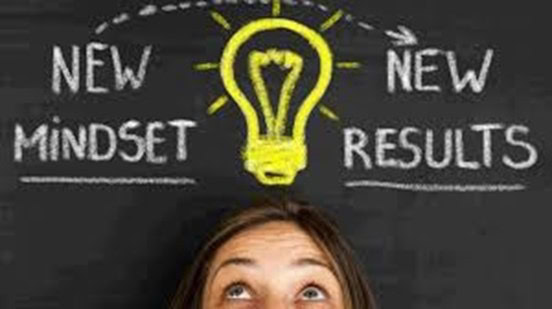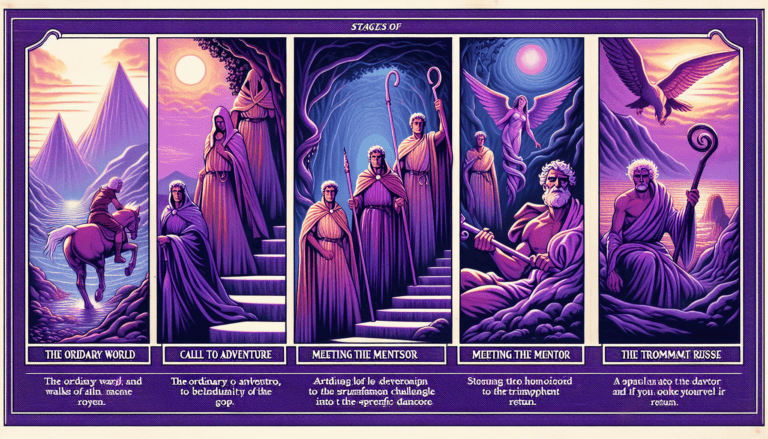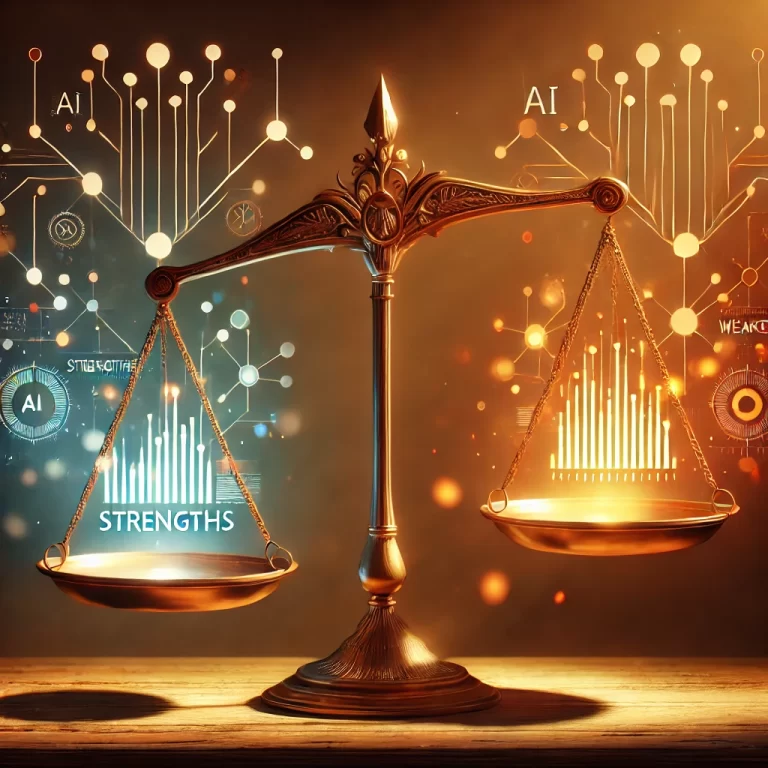Personal growth can feel overwhelming when you’re just starting out. What if making progress was simpler than you thought? The truth is, the most impactful changes often begin with small shifts in how you think. This article explores 10 simple mindset shifts that have transformed my approach to personal development—and can do the same for you. Whether you’re feeling stuck, overwhelmed, or just uncertain where to begin your self-improvement journey, these accessible mental adjustments can create powerful ripples of positive change in your life.
The Problem with Traditional Approaches to Personal Development
Look, I’ve been there. Staring at a shelf full of personal development books, dozens of browser tabs open with articles about “10 habits of successful people,” and a notebook filled with elaborate systems I was supposed to implement. And you know what? I was completely overwhelmed before I even started.
That’s the thing about traditional approaches to personal development – they’re often designed by experts who’ve forgotten what it’s like to be a beginner. It’s like being handed an instruction manual for flying a plane when you haven’t even figured out how to drive a car yet!
When I first dipped my toes into the self-improvement world, I made the classic mistake of trying to change everything at once. Monday morning would arrive, and I’d attempt to wake up at 5 AM, meditate for an hour, journal three pages, exercise for 45 minutes, and prep perfect meals for the day – all before work! By Wednesday, I was exhausted, discouraged, and ready to quit. Sound familiar?
The problem isn’t your commitment or willpower. It’s that most personal development approaches are tactically overwhelming but strategically underwhelming.
Let me explain what I mean. Most advice focuses on WHAT to do – specific techniques, habits, or systems. But they rarely address the underlying mindset that makes those tactics stick. It’s like trying to plant seeds in unprepared soil – nothing’s gonna grow there, no matter how premium those seeds are!
I remember the turning point for me was when my mentor asked a simple question: “What if you stopped trying to DO different things and started THINKING differently about the things you already do?” That hit me like a ton of bricks.
See, when we focus on mindset first, we create fertile ground where new habits can actually take root. Without that foundation, we’re just going through motions that never quite become part of who we are.
The difference between tactical changes and mindset shifts is kinda like the difference between learning dance moves versus developing a sense of rhythm. You can memorize steps all day long, but without that fundamental feel for the music, you’ll always be counting and never truly dancing.
After years of stumbling through this stuff (and trust me, I’ve made ALL the mistakes), I’ve realized that the simplest shifts in perspective often create the most profound changes in results. And the best part? These shifts don’t require buying fancy planners, waking up at ungodly hours, or completely restructuring your life.
These mindset adjustments work because they change how you interpret everything you experience. When your perception shifts, your actions naturally follow – no willpower battles required.
So before you download another productivity app or buy another system, let’s talk about the mental shifts that might just transform how you approach this whole personal development journey. Because I’ve learned the hard way that the right mindset makes the path forward so much clearer – and a whole lot less overwhelming for beginners like I once was.

Mindset Shift #1: From “Perfect or Nothing” to “Progress Over Perfection”
If there’s one thing that’s sabotaged more of my personal growth attempts than anything else, it’s perfectionism. And I bet I’m not alone here! There’s something especially toxic about perfectionism when you’re just starting out on your self-improvement journey.
I remember when I decided to start meditating. I downloaded an app, set up a beautiful little corner in my apartment with cushions and candles, and committed to 30 minutes daily. You know how long that lasted? Three days. On day four, I woke up late, couldn’t fit in 30 minutes, and thought “Well, I’ve already failed, so why bother?” And just like that, my meditation practice was dead before it even began.
That’s the sneaky thing about all-or-nothing thinking – it sets us up for failure from the start. Our brains actually use perfectionism as a clever self-protection mechanism. If we aim for perfect and don’t achieve it, we have a built-in excuse to stop trying. “I couldn’t do it perfectly, so it doesn’t count.” Sound familiar?
The psychological impact is brutal. Every time we abandon a practice because we couldn’t do it “right,” we reinforce the belief that we’re not capable of change. It’s like digging a mental trench that gets deeper each time we jump into it.
One of the biggest mindset shifts that changed everything for me was embracing “progress over perfection.” This isn’t just a cute saying – it’s a complete reorientation of how you measure success.
Here’s a simple exercise that helped me break through my perfectionist blocks: I started asking “What counts as progress?” instead of “What would be perfect?” When I couldn’t fit in 30 minutes of meditation, I’d ask myself, “Would 3 minutes count as progress?” Of course it would! And those 3-minute sessions eventually grew into longer ones without the pressure of perfectionism.
Another technique I use is what I call “minimum viable progress” – identifying the smallest step that still moves me forward. For example, if my goal is drinking more water, perfectionism might demand eight glasses daily. But my MVP might be “one glass before coffee” – that’s it! It’s so doable that it’s hard to fail, and each success builds confidence.
Celebrating small wins feels silly at first, but it’s crucial for rewiring your brain. I literally put gold star stickers on my calendar for days I take any action, no matter how small. My inner critic used to mock this practice – “What are you, five years old?” – but I’ve learned that momentum comes from acknowledging progress, not just from making it.
The shift from perfectionism to progress-focus doesn’t happen overnight (ironically, trying to perfect this mindset shift would defeat the purpose!). I still catch myself in all-or-nothing thinking, especially when I’m stressed or tired. But now I recognize it faster and can gently redirect my thinking.
Remember, perfection isn’t just impossible – it’s the enemy of growth. Every master was once a disaster, every expert began as a novice. The people who succeed aren’t those who never mess up – they’re the ones who keep going despite the mess-ups. And that journey begins with giving yourself permission to be imperfectly, gloriously human while still moving forward.
Mindset Shift #2: From “I Have To” to “I Choose To”
I used to dread my morning alarm. Every day started with the same heavy thought: “I have to go to work.” Then after work: “I have to exercise.” Then: “I have to prepare for tomorrow.” My days felt like an endless checklist of obligations that left me exhausted and resentful.
What I didn’t realize was how much power was hidden in two small words.
There’s a world of psychological difference between saying “I have to” versus “I choose to.” It might seem like just semantics, but the impact on your brain and motivation is profound. When everything in your life is framed as an obligation, your brain interprets each task as an external pressure – something being done TO you rather than BY you.
I discovered this shift by accident. One particularly grumpy morning, as I was mentally complaining about having to go to work, a thought popped into my head: “Well, technically I don’t HAVE to go. I could quit today if I really wanted.” This wasn’t a practical option, but just recognizing I had a choice – even a theoretical one – shifted something in me.
So I tried an experiment. For one week, I banned “have to” from my vocabulary and replaced it with “choose to.” Instead of “I have to go to work,” I said “I choose to go to work because I value financial stability and the contributions I make.” Instead of “I have to exercise,” it became “I choose to exercise because I want energy and health.”
Not gonna lie – it felt weird and fake at first! But after a few days, something shifted. Tasks that had felt like burdens started feeling more like decisions I was making. Even the things I didn’t particularly enjoy became expressions of my values rather than impositions on my freedom.
Here’s a simple exercise I now use regularly: Take a piece of paper and draw a line down the middle. On one side, list all your “have to” tasks for tomorrow. Then, on the right side, rewrite each one as “I choose to…” followed by your reason. Be honest about your reasons – they might be practical (“because I need money”) or deeper (“because it aligns with my values”).
The ownership mindset that comes from this shift is the foundation of intrinsic motivation – that magical internal drive that doesn’t rely on external rewards or pressure. When you truly own your choices, even the difficult ones, you tap into a different kind of energy.
I noticed this difference acutely in my approach to learning new skills. When I “had to” learn something for work, it was a drag. When I reframed it as “I choose to develop this skill because it expands what I’m capable of,” learning became energizing rather than depleting.
Of course, there are still plenty of things in life we don’t actively want to do. I don’t wake up excited about doing my taxes or cleaning the bathroom! But even with these tasks, acknowledging the choice transforms the experience. “I choose to do my taxes because I value staying legal and avoiding stress later” puts me back in the driver’s seat of my life.
This shift from obligation to choice isn’t about denying reality – it’s about reclaiming your agency within it. And for me, that has made all the difference between feeling like a victim of my responsibilities and feeling like the author of my story.
Mindset Shift #3: From “Fixed Abilities” to “Growth Potential”
I used to be convinced that people were just naturally good at certain things and bad at others. Math? Not my thing. Writing? Born with it. Public speaking? Some people have it, some don’t. And I definitely didn’t.
This belief that our abilities are innate and unchangeable is what psychologists call a “fixed mindset,” and man, did I have a severe case of it! I avoided challenges that might expose my “natural” limitations and gave up quickly when things got hard – after all, why struggle if you’re just not “meant” for something?
Then I learned about neuroplasticity, and it blew my mind. The science is clear: our brains physically change and form new connections throughout our lives in response to learning. This isn’t motivational fluff – it’s biological fact. When I first encountered this research, I was both fascinated and a little angry. Why had I spent years believing my capabilities were set in stone?
You might be stuck in a fixed mindset without even realizing it. I certainly was! Listen to your inner dialogue when you face challenges. Thoughts like “I’m just not a math person,” “I’m too old to learn that,” or “I’ve always been bad at remembering names” are huge red flags. Or maybe you avoid certain activities because you’re afraid of looking incompetent, or you feel threatened by others’ success rather than inspired by it. These are all signs of a fixed mindset at work.
Shifting to a growth mindset didn’t happen overnight for me. It started with adding one tiny word to my self-talk: “yet.” Instead of “I’m not good at public speaking,” I’d say “I’m not good at public speaking yet.” That simple addition opened up possibility where before there was only limitation.
I also began collecting evidence that contradicted my fixed beliefs. I created what I call a “growth proof journal” where I tracked skills I’d improved over time. Looking back at early attempts compared to current abilities provided concrete proof that growth was not only possible but was actually happening.
Another practice that helped was changing how I talked about my efforts. Instead of “I’m trying to learn Spanish,” I’d say “I’m developing my Spanish skills.” This subtle shift from “trying” (which implies possible failure) to “developing” (which implies ongoing progress) made a significant difference in my persistence.
The most powerful thing about adopting a growth mindset is how it transforms your response to setbacks. When I bombed a presentation at work, my old fixed mindset would have concluded “I suck at this and always will.” My growth mindset now thinks “That didn’t go as planned. What can I learn from this that will help me improve next time?”
I won’t pretend this shift is easy. Our fixed mindset beliefs often formed early in life and run deep. I still catch myself in fixed thinking, especially in areas where I’ve had painful failures. But now I recognize it faster and can gently steer myself back toward growth-oriented thinking.
The truth is, we’re all a work in progress. Your abilities aren’t fixed – they’re growing and evolving with every effort you make. And just like a plant grows with consistent nurturing over time, your capabilities expand with patient, persistent effort. This understanding doesn’t just change how you approach personal development – it transforms what you believe is possible for your life.
Mindset Shift #4: From “Failure Is Bad” to “Failure Is Feedback”
I’ll never forget the time I launched my first online workshop. After weeks of preparation, I was ready for my big moment. Five people signed up. Three showed up. One left halfway through. I was devastated and labeled the entire experience a humiliating failure.
For weeks afterward, I couldn’t bring myself to try again. The fear of another “failure” paralyzed me. Sound familiar?
Our fear of failure isn’t just a personal hang-up—it’s hardwired into our psychology. Our ancestors lived in environments where failure could mean literal death. A failed hunt meant no food; social rejection meant no protection from the group. Our brains evolved to avoid failure at all costs because survival depended on it.
The problem is, we’re still running this ancient psychological software in a modern world where most failures aren’t life-threatening at all. They just feel that way.
The mindset shift that changed everything for me came from a mentor who asked, “What if you treated that workshop not as a failure but as a data-gathering expedition?” She challenged me to extract every possible lesson from the experience—to treat it as valuable feedback rather than a final verdict on my abilities.
So I did. I reached out to the participants and asked for honest input. I reviewed the content with fresh eyes. I analyzed my marketing approach. And you know what? I discovered specific, actionable insights that I would have missed if I’d just labeled the experience as “failure” and tried to forget it.
This reframing from “failure is bad” to “failure is feedback” doesn’t come naturally at first. Our emotional reaction to setbacks is immediate and intense. But I’ve developed some techniques that help me extract the value from every stumble.
One approach I use is what I call a “failure autopsy”—a structured reflection that asks: What worked, even a little bit? What didn’t work as expected? What surprised me? What will I do differently next time? By approaching disappointments with curiosity rather than judgment, they transform from sources of shame to sources of wisdom.
Another technique is “preemptive failure framing.” Before starting something challenging, I explicitly tell myself that missteps are not just possible but probable and valuable. “I’m going to try this new approach, and I expect to learn a lot from what doesn’t work.” This mental preparation makes it easier to stay constructively engaged when things go sideways.
Building resilience through this mindset shift is an ongoing practice. I still feel the sting of disappointment when things don’t go as planned. But the recovery time has shortened dramatically. Instead of weeks of avoidance, I might feel down for a day before I can engage productively with the lessons available.
The truth I’ve come to embrace is that the path to mastery in anything is paved with instructive failures. The most successful people aren’t those who magically avoid failure—they’re the ones who fail frequently, learn voraciously, and adjust continuously.
The workshop that “failed”? Six months later, I launched a completely redesigned version based on everything I’d learned. It sold out. Not because I’m exceptionally talented, but because I was willing to let failure be my teacher rather than my judge.
So the next time something doesn’t work out as you hoped, try asking yourself: “What is this experience trying to teach me?” That question transforms failures from endpoints into stepping stones—and that makes all the difference.
Mindset Shift #5: From “Comparing to Others” to “Comparing to Yesterday’s Self”
I used to spend hours scrolling through social media, looking at people who seemed to have everything figured out. Fitness influencers with their perfect morning routines. Career gurus sharing their six-figure success stories. Meditation teachers who never seemed to have an anxious thought.
And with each scroll, I felt worse about myself. Why couldn’t I be as disciplined, successful, or centered? Why was everyone else making faster progress on their personal development journey?
This comparison trap is brutal, especially for beginners. And it’s not just a modern social media problem – though platforms certainly amplify it! Our brains are actually wired to compare ourselves to others. In prehistoric times, understanding your place in the social hierarchy was crucial for survival. But in today’s context, constant comparison is like poison for personal growth.
Neuroscience shows that when we compare ourselves unfavorably to others, our brains activate the same regions involved in physical pain. We literally hurt ourselves with comparison! And if that weren’t bad enough, it destroys motivation. I can’t count how many times I’ve abandoned a new habit because I wasn’t progressing as quickly as someone else seemed to be.
The mindset shift that saved me was moving from comparing myself to others to comparing myself only to yesterday’s version of me. It sounds simple, but the impact on my motivation and wellbeing was profound.
I started implementing this shift by creating personal baselines for everything I wanted to improve. Instead of vague goals like “get fit” or “be more mindful,” I measured where I actually was at the start. How many push-ups could I do? How many minutes could I meditate before getting distracted? These honest baselines weren’t impressive – and that was the point. They weren’t meant to be shared or compared. They were just my starting points.
Then I began tracking my progress against these personal baselines. I made a rule: the only person I was allowed to compare myself with was me from yesterday, last week, or last month. When I could do 10 push-ups instead of my initial 5, that was victory – regardless of the fitness influencer cranking out 50 on Instagram.
A simple daily practice that reinforced this mindset was asking: “How am I better today than I was yesterday?” Sometimes the improvement was tiny – I drank one more glass of water or responded with patience in a situation that would have frustrated me before. But acknowledging these personal improvements, no matter how small, built a sustainable motivation that comparison to others never could.
This isn’t to say we should ignore others completely. I still learn from people further along in their journeys. But I’ve learned to distinguish between inspiration (“Their success shows what’s possible”) and comparison (“Their success makes me feel inadequate”).
The freedom that comes with releasing the comparison trap is incredible. Progress becomes personal. Your timelines become your own. And perhaps most importantly, your joy in the journey increases dramatically when you’re not constantly finding yourself lacking against impossible, often curated standards.
Remember, personal development is called “personal” for a reason. Your growth isn’t a competition, and the only truly meaningful measure is whether you’re moving forward on your own unique path. Yesterday’s you is the only benchmark that matters.
Mindset Shift #6: From “Either/Or Thinking” to “Both/And Possibilities”
I used to be the queen of black-and-white thinking. Something was either good or bad. I was either succeeding or failing. A habit was either perfect or broken. This kind of binary thinking felt clarifying—it simplified a complex world into neat categories. But I eventually realized it was severely limiting my growth.
Here’s a personal example: For years, I believed I could either focus on my career OR have a balanced life with hobbies and relationships. The idea that I could pursue professional success AND personal fulfillment seemed impossible. This either/or mentality forced me into false choices and unnecessary sacrifices.
The problem with black-and-white thinking is that it creates artificial limitations. Our brains love simplicity and certainty, so they naturally gravitate toward clear-cut distinctions. But reality is rarely so clean-cut—it’s full of nuances, exceptions, and paradoxes that don’t fit neatly into binary categories.
Cognitive flexibility—the ability to adapt your thinking and consider multiple perspectives—is like a superpower for personal growth. When I began intentionally challenging my either/or assumptions, new possibilities emerged that I couldn’t see before.
One simple exercise that helped me develop this mindset was the “Yes, and…” technique borrowed from improv comedy. When facing an apparent dichotomy, instead of choosing between options, I’d ask, “How could both of these be true?” For example: “Yes, I can prioritize my career advancement, AND I can maintain boundaries for personal time.”
Another practical approach is what I call “expanding the gray area.” When I catch myself using absolute words like “always,” “never,” “completely,” or “impossible,” I pause and look for exceptions or middle-ground positions. This simple awareness practice has revealed countless false dichotomies in my thinking.
The power of cognitive flexibility extends beyond solving practical dilemmas—it transforms how you approach personal challenges. For instance, rather than seeing myself as “either disciplined or lazy,” I began recognizing that I could be highly disciplined in some contexts while struggling in others. This more nuanced self-understanding allowed for targeted improvement rather than global self-judgment.
I’ve also found that embracing paradox—the idea that seemingly contradictory things can both be true—leads to richer, more creative thinking. I can be both confident AND humble. A task can be both challenging AND enjoyable. Personal development can be both serious work AND playful exploration.
Shifting from binary thinking to more flexible, inclusive thought patterns isn’t easy. Our brains crave the certainty of clear categories. I still catch myself falling into either/or thinking, especially when I’m stressed or tired. But with practice, spotting these false dichotomies becomes more automatic.
The payoff is worth the effort. When you stop forcing complex realities into oversimplified boxes, you discover possibilities that were invisible before. Problems that seemed unsolvable suddenly have creative solutions. And your approach to personal growth becomes more nuanced, compassionate, and effective.
So the next time you find yourself trapped between seemingly opposing options, pause and ask: “What if both could be true? What possibilities might exist beyond either/or?” The answers might surprise you—and open doors you didn’t even know were there.
Mindset Shift #7: From “I’m Not Ready” to “I’ll Learn As I Go”
“I’ll start when I’ve read a few more books on the subject.” “Let me take one more course before I begin.” “I need to create the perfect plan first.”
I’ve told myself all these things, and I bet you have too. The “I’m not ready yet” mindset is procrastination in disguise, wearing a convincing costume called “preparation.” It feels responsible and sensible—after all, shouldn’t we prepare thoroughly before diving in?
Well, yes and no. The psychology behind this form of procrastination is fascinating. Our brains are wired to avoid uncertainty and potential failure. By constantly preparing rather than doing, we create an illusion of progress while staying safely in our comfort zone. I spent three years “preparing” to start a blog—reading about blogging, taking courses on writing, planning content—without ever publishing a single post!
The problem is that some forms of knowledge can only come through experience. No amount of preparation can substitute for actual practice. Reading about swimming won’t teach you to swim; only getting in the water will.
The turning point for me was realizing that waiting for readiness was keeping me permanently stuck. There would never be a magical moment when I felt 100% prepared for any significant challenge. The uncomfortable truth is that growth happens in the gap between what we know and what we’re trying to do.
Embracing beginner status was surprisingly liberating once I reframed it as a strength rather than a weakness. Beginners have fresh perspectives. They ask questions experienced people might miss. They’re not burdened by “the way things are always done.” When I finally started my blog without feeling “ready,” I discovered that readers actually appreciated my beginner’s perspective on topics.
I developed a simple question to combat the “not ready yet” mindset: “What’s the smallest step I could take right now with my current knowledge?” Sometimes that meant writing just one paragraph instead of waiting until I’d outlined a perfect article. Or doing five minutes of a new exercise routine rather than waiting until I understood the entire fitness program.
The shift from theoretical preparation to action-based learning transformed my approach to personal development. Instead of front-loading all the learning before starting, I embraced a cycle of: try something small → observe the results → adjust → try again. This approach builds real-world knowledge that no book or course can provide.
This doesn’t mean preparation isn’t valuable—it absolutely is! But preparation should be just enough to take the next step, not an indefinite process that prevents any action at all. I now follow what I call the “70% rule”: When I feel about 70% ready, I start. The remaining 30% I’ll figure out through experience.
For example, when I began meditation, instead of reading ten books on the subject first (my natural inclination), I read one beginner’s guide and then started a practice. My early attempts were imperfect—my mind wandered constantly—but the practical insights I gained from actually sitting on the cushion were more valuable than any theory.
If you’re waiting until you feel ready to start your personal development journey (or the next stage of it), consider that readiness is something you create through action, not something you wait for. Begin before you feel ready, embrace the identity of a learner rather than an expert, and trust that wisdom will come through experience.
The most important things I’ve learned in life didn’t come from preparation—they came from jumping in, making mistakes, adjusting course, and continuing despite uncertainty. As the saying goes, “You don’t have to be great to start, but you have to start to be great.”
Mindset Shift #8: From “Overwhelming Goals” to “Next Small Steps”
“I want to transform my health completely.” “I need to overhaul my entire financial situation.” “I should revamp my whole approach to productivity.”
These were statements I used to make regularly—grand, sweeping goals that felt inspiring when I wrote them down. But when it came to actually making progress? I’d feel paralyzed, overwhelmed by the sheer magnitude of what I was attempting.
I’ve since learned there’s a psychological burden that comes with focusing on distant, intimidating goals. Our brains simply aren’t wired to handle overwhelming objectives well. When faced with a massive goal, our stress response often activates, triggering either fight (pushing too hard and burning out), flight (avoiding the goal entirely), or freeze (analysis paralysis).
I experienced this cycle repeatedly. I’d set a huge goal like “completely transform my fitness,” get overwhelmed by everything it would require, take no real action, feel guilty, and then eventually abandon the goal—only to set a similar one a few months later. Sound familiar?
The mindset shift that finally broke this cycle was moving from focusing on overwhelming goals to identifying just the next small step. Instead of thinking about the mountain I wanted to climb, I learned to look only as far as the next few feet of the path.
Breaking down ambitions into tiny next actions dramatically reduces psychological resistance. There’s a world of difference between “transform my health” (overwhelming) and “drink a glass of water before breakfast tomorrow” (doable). The small step feels manageable, even easy. And here’s the magic: each small step completed builds momentum and confidence for the next one.
I developed a practice I call “minimum viable next action” (MVNA). Whenever I notice myself feeling stuck or procrastinating, I ask: “What is the absolute smallest next step I could take?” Often, it’s ridiculously small—opening a document, sending a single email, or doing just one pushup. The key is that it must be so small that the resistance to doing it is lower than the energy required to avoid it.
For example, when I wanted to build a meditation practice, my MVNA wasn’t “meditate for 20 minutes daily.” It was “sit on the cushion for 60 seconds tomorrow morning.” That’s it. Of course, once I was actually sitting there, I usually meditated longer—but removing the pressure of the larger commitment made starting possible.
What I’ve discovered is that the compound effect of consistent small steps vastly outperforms sporadic big efforts. I used to believe in the “go big or go home” mentality, throwing myself into intense programs that I couldn’t sustain. Now I understand that tiny, consistent actions—even if they seem insignificant in isolation—accumulate into remarkable results over time.
This approach works because it bypasses mental inertia—the tendency to stay inactive until forced to move. Physics tells us that objects at rest tend to stay at rest, and the same applies to our behavior patterns. Small steps require less force to overcome this inertia than big ones.
Another benefit of the next-small-step approach is that it keeps you in action mode rather than planning mode. I used to spend hours creating elaborate plans for big goals, which felt productive but often became a substitute for actual progress. Now I plan just enough to identify the next viable step, take it, and then reassess.
The journey of personal growth isn’t made of dramatic leaps—it’s made of countless small steps taken consistently over time. By shifting your focus from the overwhelming goal to just the next small action, you transform the way you experience the journey. It becomes less about striving for distant perfection and more about showing up consistently in small ways that, day by day, create the life and person you want to become.
Mindset Shift #9: From “External Validation” to “Internal Compass”
I’ll admit something embarrassing: for years, I chose personal development goals based primarily on what would impress other people. I pursued certain fitness goals not because they mattered to me, but because they’d be visible to others. I read books I could mention in conversation rather than ones that truly interested me. My growth journey was driven largely by the desire for external validation—likes, compliments, and admiration.
This approach seemed to work at first. Getting positive feedback feels good! But eventually, I noticed something troubling. Despite checking off impressive-sounding achievements, I didn’t feel fulfilled. Worse, when the external validation inevitably fluctuated, my motivation crashed with it. I’d abandon practices that were genuinely beneficial simply because no one had noticed or commented on them recently.
The trap of seeking approval as motivation for personal development is particularly sneaky because it masquerades as ambition or high standards. But in reality, it creates a fragile foundation for growth. External validation is inconsistent, often arbitrary, and always beyond your control. Building your development journey on this foundation is like building a house on shifting sand.
The mindset shift that transformed my approach was moving from an external validation focus to an internal compass. This meant learning to identify and honor my authentic values as a decision-making framework, rather than chasing the approval of others.
Identifying your authentic values isn’t as simple as it sounds. Our true values are often buried under layers of societal expectations, family conditioning, and social media influence. I developed a practice called “values excavation” to uncover mine. For two weeks, I journaled about moments when I felt most alive, engaged, and fulfilled—regardless of whether anyone else noticed or approved. Then I looked for patterns in these experiences and extracted the core values they represented.
What emerged surprised me. While I thought I valued achievement and recognition, my moments of deepest fulfillment involved creativity, connection, and learning for its own sake. These became the foundation of my internal compass.
Strengthening your internal guidance system takes deliberate practice. One simple technique I use is the “future self check-in.” When making a decision about my development path, I ask: “Will my future self thank me for this, regardless of what others think?” This question cuts through external pressures and connects me to what truly matters for my growth.
Another practice is what I call “validation fasting”—deliberately keeping certain growth activities private. For example, I practiced meditation for three months without telling anyone or posting about it. This forced me to find motivation entirely from the internal benefits I was experiencing, not from others’ reactions.
The challenge, of course, is balancing this internal compass with the genuine value of external feedback. I’m not suggesting we ignore all outside input—that would be swinging too far in the opposite direction. The key is developing discernment about which feedback serves your authentic growth and which simply feeds your approval addiction.
I now use a mental filter for external input: “Is this feedback helping me align more closely with my core values, or is it pulling me toward someone else’s vision for my life?” This question helps separate useful guidance from distracting noise.
The liberation that comes from shifting to an internally-guided growth journey is profound. You stop abandoning practices that truly serve you just because they’re not earning approval. You become more consistent in your efforts because your motivation isn’t dependent on external recognition. And perhaps most importantly, the growth you experience feels genuinely meaningful because it’s aligned with who you truly are, not who you think you should be.
Your personal development journey is exactly that—personal. External validation can be a pleasant bonus, but when your internal compass guides the way, you’ll find yourself on a path that feels authentically yours, regardless of who’s watching or what they think of it.
Mindset Shift #10: From “Someday Thinking” to “Today Focus”
“Someday I’ll start meditating regularly.” “Someday I’ll get serious about my health.” “Someday I’ll learn a new language.”
The word “someday” used to be one of my favorites. It let me feel virtuous about my intentions while requiring nothing of me today. I could drift along, secure in the belief that my better self existed in some fuzzy future where everything would magically fall into place.
The psychology behind this future-oriented thinking is fascinating. Our brains actually process our future selves almost as if they were different people. This creates a cognitive disconnect where we easily assign difficult tasks to this “other person” (future you), while present you gets to avoid discomfort. It’s a clever mental trick that feels good in the moment but keeps us stuck in perpetual preparation mode.
I was a master of this self-deception. I’d spend hours planning elaborate future routines, creating beautiful tracking systems, and researching the perfect approach—all while taking zero action today. This planning became a substitute for actual growth, giving me the pleasant feeling of progress without the challenging work of change.
The mindset shift that finally broke this pattern was moving from someday thinking to today focus. It started with a simple question: “What can I do in the next 24 hours that moves me toward the person I want to become?”
Not next week. Not when circumstances are perfect. Today.
This shift forces a level of concreteness that “someday” thinking cleverly avoids. When you focus on today, you can’t hide behind vague intentions or elaborate plans. You must identify specific, actionable steps that present-you will actually take.
I developed a practice I call “daily embodiment” to reinforce this mindset. Each morning, I ask myself: “How can I be a small version of my ideal future self today?” If future-me is someone who prioritizes health, present-me can take a 10-minute walk. If future-me is multilingual, present-me can practice Spanish for five minutes. These tiny actions might seem insignificant compared to my grand visions, but they do something powerful—they collapse the imaginary gap between present-me and future-me.
Another technique that strengthened my today focus was creating what I call “micro-habits”—tiny present-moment practices that require almost no willpower but still represent meaningful action. For example, doing a single pushup every time I wait for water to boil, or reading one paragraph of a book while my coffee brews. These micro-habits anchor personal development in daily reality rather than someday fantasies.
The shift from someday thinking to today focus doesn’t mean abandoning long-term vision. Rather, it means recognizing that the future is created exclusively through present actions. There is no magical someday when everything will suddenly become easier or when you’ll finally have enough time, energy, or motivation. There is only today, with all its limitations and possibilities.
This mindset also brings a profound sense of agency. When you stop relegating your growth to some hypothetical future, you reclaim responsibility for your development right now. This can feel uncomfortable at first—no more comforting someday stories—but it’s ultimately empowering. You begin to see how small, consistent actions today shape who you become tomorrow.
One unexpected benefit of this shift was realizing how many “someday” goals weren’t actually important to me. When forced to consider what I was willing to take action on today, many aspirations that sounded good in theory revealed themselves as someone else’s priorities, not mine. This clarity helped me focus my limited time and energy on growth that truly mattered to me.
The path to personal development isn’t paved with somedays—it’s built one today at a time. By anchoring your focus in present action, you transform personal growth from a perpetual future fantasy into a living, evolving reality. The question isn’t “Who will you become someday?” but rather “Who are you becoming through what you choose today?”

Conclusion
When I first started my personal development journey, I was overwhelmed by complex systems and grand transformations that seemed impossibly far away. I’d jump from one approach to another, always seeking the perfect method that would finally “fix” everything. Maybe you’ve been there too.
What I’ve discovered through years of trial, error, and eventual progress is that sustainable personal growth doesn’t require elaborate systems or superhuman willpower. It begins with simple shifts in how you think about yourself, your capabilities, and your approach to growth.
The 10 mindset shifts we’ve explored—focusing on progress over perfection, choosing rather than obligating yourself, embracing growth potential, seeing failure as feedback, comparing to your past self, thinking in possibilities, learning as you go, focusing on small steps, developing internal validation, and centering on today—create a mental environment where personal development happens more naturally and joyfully.
When you make these shifts, the journey becomes less about forcing change and more about allowing your evolved thinking to guide your actions. You’ll find yourself making choices that support growth not because you “should,” but because they align with how you now see yourself and the world.
I encourage you to experiment with these mindset shifts rather than trying to perfect them all at once (that would contradict the very first shift we discussed!). Choose one that resonates most strongly with your current challenges and focus on integrating it into your thinking. Notice how even a slight shift in perspective can create meaningful changes in your motivation, consistency, and results.
Remember that transforming your mindset is itself a journey, not a destination. These shifts aren’t one-time changes but ongoing practices. You’ll likely find yourself cycling through periods of clarity and confusion, progress and plateaus. That’s not failure—it’s the natural rhythm of authentic growth.
The beauty of these mindset shifts is that they compound over time, each one supporting and strengthening the others. As you practice seeing failure as feedback, for instance, you naturally become more willing to take small steps outside your comfort zone. As you focus on today rather than someday, you build momentum that makes progress over perfection easier to embrace.
Which of these mindset shifts will you implement first in your personal development journey? Whatever you choose, remember that the fact that you’re here, reading and reflecting, means you’ve already begun the most important shift of all—from passive acceptance to active growth. And that’s something worth celebrating, right now, today.




